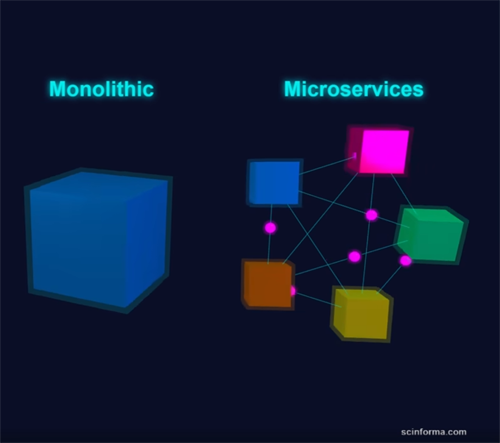
Software Engineer
What Are Microservices and When Should You Use Them?

What is microservices and when do we need it?
Choosing the right architecture isn’t just theory — it’s about solving real problems efficiently. The debate between monoliths and microservices is often framed as a theoretical one, but in reality, it comes down to practical trade-offs and how you want to evolve your system over time.
Recently, I had to implement a feature to suggest alternative searches for words not found in the dictionary. Sounds simple? It wasn’t. The solution required stemming, multi-language support, and integration with Hunspell. The challenge: the main server didn’t support custom module installation, and modifying the core application would have introduced significant complexity.
Instead of overloading the monolith, I decided to build a microservice using FastAPI and Hunspell, and connected it via REST API. This allowed the main application to remain focused on its core search functionality while delegating specialized logic to a separate service.
The benefits were immediately apparent:
✅ Modular design — the service could be developed, tested, and deployed independently.
✅ Easier maintenance — updates to the search logic wouldn’t risk breaking the main application.
✅ Language-specific processing without bloating the main app — we could add new languages or rules without touching the monolith.
Why microservices make sense in this scenario
Microservices excel when a feature has unique requirements that are significantly different from the rest of the application. In my case:
- The new search functionality required Python packages and NLP libraries that the main server didn’t support.
- The processing involved computationally intensive operations that could impact performance if run directly in the monolith.
- Independent deployment meant I could iterate faster, roll out updates without downtime, and scale this component separately if usage grew.
Microservices also encourage a mindset shift: instead of building everything in one place, each service focuses on a single responsibility. This aligns well with the principles of clean architecture and SOLID design.
When does it make sense to use microservices?
- When a feature requires a different tech stack or language than the core system
- When the functionality is highly specialized and isolated
- When scalability or independent deployment is critical
- When you want to avoid introducing unnecessary complexity into the main application
Microservices also make testing easier. Each service can have its own unit tests, integration tests, and CI/CD pipeline. If a bug arises, it’s easier to isolate and fix it without affecting unrelated parts of the system.
Potential trade-offs
While microservices have clear benefits, they are not a silver bullet. They introduce complexity in terms of:
- Networking and communication — REST or gRPC calls add latency and require error handling.
- Deployment complexity — multiple services mean multiple pipelines and environments.
- Monitoring and observability — tracking failures or performance issues across services requires proper tooling.
Understanding these trade-offs is key. The goal is not to adopt microservices blindly, but to use them strategically for high-impact, specialized features.
Lesson learned
Microservices aren’t about doing more for the sake of it — they are about doing the right thing for specialized, isolated, or high-scale features. For my dictionary app, they enabled a modular, maintainable solution that could grow independently of the core system.
The broader takeaway: choose architecture based on the problem, not trends. Microservices can be transformative for certain cases, but unnecessary for features that are simple, tightly coupled, or unlikely to scale independently.
High-level architecture decisions should always balance short-term efficiency with long-term flexibility. In my experience, selectively applying microservices where they make sense is far more effective than trying to convert an entire monolith without clear justification.
- #microservices
- #architecture
- #softwaredesign
- #modularity
- #scalability
- #development
Hello! How can I help you today?
 Virtual Chat
Virtual Chat- Hello! My name is VirtuBot. I am a virtual assistant representing Nazar. You can ask me questions as if I am Nazar.12:36 AMTell me about yourself?
